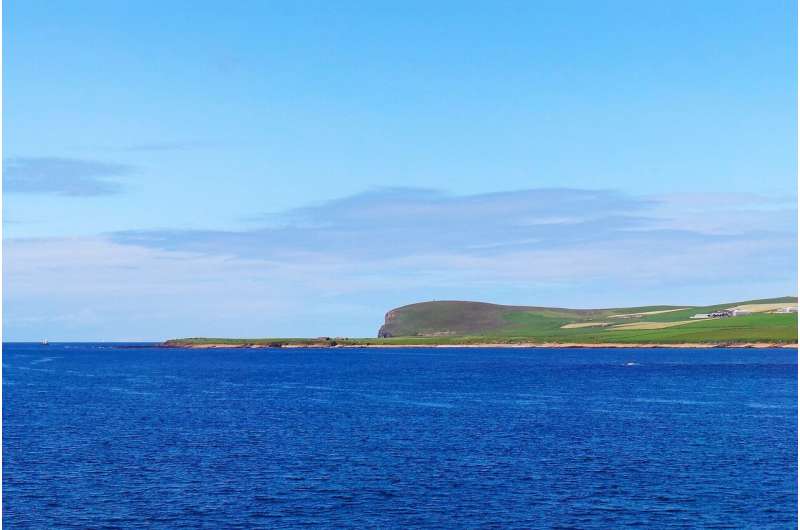This article has been reviewed according to Science X's editorial process and policies. Editors have highlighted the following attributes while ensuring the content's credibility:
fact-checked
trusted source
proofread
Scientists chart the growing weather extremes on maritime Antarctic islands

Scientists at British Antarctic Survey have found that the number of warm weather events in the South Orkney Islands has significantly increased in frequency over the last 75 years. Using newly available historical data, scientists have identified the atmospheric factors behind the warm events in the region, shedding new light on the climate change trends that are affecting sub-Antarctic islands.
The scientists found that the warm trends in these islands were closely linked to an increase in extreme warm-event occurrence. These extreme weather events were generated by anomalous large-scale atmospheric circulation patterns. The researchers have published two papers. One in International Journal of Climatology and the other in Quarterly Journal of the Royal Meteorological Society.
Atmospheric rivers—long, narrow plumes of water vapor in the atmosphere—picked up and then transferred a great amount of heat and water vapor from tropical or subtropical ocean. These interacted with the mountainous topography of the South Orkney Islands, which led to increased melting of ice and snow in the region.
The isolated and mountainous South Orkney Islands are important to Antarctic ecological systems and biodiversity, and extreme warm air temperatures over these islands could result in ecosystem change. The islands are also surrounded by the waters of the Weddell-Scotia confluence zone—dynamic and productive waters that impact global ocean circulation.
Hua Lu, lead author of both papers, said, "The warming trends we've uncovered have real implications for the sensitive biodiversity of the South Orkney Islands. Signy Island supports one of the richest and most diverse ecosystems in the Southern Ocean. Although these islands are remote and isolated, they demonstrate how Earth's climate systems connect us all. As historic climate patterns shift, we need to be ready for the knock-on impact on the natural environment and on people around the world."
The findings are some of the early outputs of the SURFEIT program, which aims to improve scientific models of interactions between the atmosphere, water, snow and ice, and our ability to predict extreme event weather changes in Antarctica.
These new findings are based on meteorological records from two research stations in the South Orkney Islands: British Antarctic Survey's Signy Research Station, and the Argentine Orcadas Base.
The continuous meteorological records from 1947 to 1995 at Signy Station were made possible by a digitization project supported by the Diversity in UK Polar Science initiative. For the first time, these newly available historical Signy records have been used for uncovering long-term temperature trends and extreme warm events in the region.
More information: Hua Lu et al, Temperature variation in the South Orkney Islands, maritime Antarctic, International Journal of Climatology (2023). DOI: 10.1002/joc.8302
Hua Lu et al, Extreme warm events in the South Orkney Islands, Southern Ocean: Compounding influence of atmospheric rivers and föhn conditions, Quarterly Journal of the Royal Meteorological Society (2023). DOI: 10.1002/qj.4578
Provided by British Antarctic Survey




















